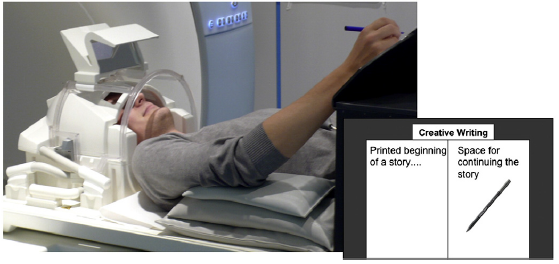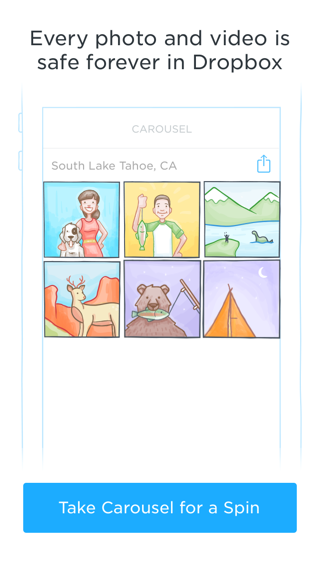Build Design Systems With Penpot Components
Penpot's new component system for building scalable design systems, emphasizing designer-developer collaboration.

Springboard – Medium | Jason Fox 
You’ve been in this situation.
You’re in a meeting. An epic brainstorm has just drenched the room in creativity. Suddenly, the room’s attention turns to you. They want you to put polished words to their ideas. And they want you to do it on the spot. After all, you’re the designer/writer/UX expert… right?
Not so fast. Obligation can stifle even the best-prepared communicators among us. But maybe we’ll get lucky and the words will come to us with ease. Then again, maybe not. Luckily, there’s a trick up all of our sleeves that can prepare us for even the most unexpected requests for words.

Humans have been speaking to each other for 197,000 years longer than we’ve been writing to each other. In fact, the same neural circuits that regulate speech production are also responsible for syntactical, semantic, and cognitive processing. Viewed this way, written language is simply a beautiful visual artifact of human speech.
You’ve likely heard the advice to read your copy out loud while editing. I’ve been doing it my entire career as a writer. I’m doing it right now.
But why is this method such a popular editing device? Well, it’s primarily because speaking the words we’ve written helps to identify rhythmless, un-empathic writing. It’s quality control for writing that doesn’t sound human.
Beyond being a superb way to edit copy, the act of speaking out loud allows us to tap into deep wells of creativity.
Numerous neurophysiological and behavioral studies support the idea that it’s the basal ganglia which gives us our “reiterative” language abilities. That is, the ability to translate a finite number of motor coordination acts (such as simultaneously manipulating the larynx, tongue, and lips to form speech) into a nearly limitless amount of words.
What this means is that the motor control of speech might just be the biological basis of creativity.

 Left: fMRI and creative writing, published in NeuroImage. Right: The first language tools in Current Anthropology.
Left: fMRI and creative writing, published in NeuroImage. Right: The first language tools in Current Anthropology.
Here’s an example: In a 2014 study on creative writing, neuroscientists documented an interesting contrast between novice and expert writers. While novice writers activated visual centers in the brain, expert writers showed increased activity in regions that involve speech, almost as if those experts were using an inner voice to narrate their writing.
Worthy reading: The Evolution of Human Speech: Its Anatomical and Neural Bases
Understanding the basis of creativity doesn’t make it any easier to be creative on demand. Before we can get start putting words to our ideas, we have to get past that pesky feeling of vulnerability. And it’s not always easy.
But it’s worth it. Why? Because the real magic happens out there in that vast creative space of vulnerability.
So, in order to tap into that universe of language stored up in our heads, we need momentum.
We need to reach escape velocity.
And the simple act of speaking out loud can help us get there.
We’ve already explored how speaking aloud can enhance your creativity. Now, let’s take a closer look at how speech can strengthen various forms of communication. Hint: It’s all about making the copy sound natural when spoken aloud.
Product writing (the words that accompany UX design) is notoriously time-consuming. It’s not uncommon for a five-word sentence of product copy to be distilled from hours of research and hundreds of words that didn’t make the cut.
 This Slack headline is rhythmic, persuasive, and memorable. Read it out loud — you won’t be the first person to do so.
This Slack headline is rhythmic, persuasive, and memorable. Read it out loud — you won’t be the first person to do so.
And the best products out there utilize copy that sounds completely natural, as if you were speaking the words yourself. No doubt, these finely-tuned word packages are often the result of some writer speaking copy aloud to herself over and over again. Constantly refining the language until it reaches that fleeting natural arrangement.
To reach that natural construction, even the smallest copy elements should consider intonation, tempo, rhythm, and melody. And while we rarely see UX writing in iambic pentameter, many brands use rhyming and rhythm with stellar results.
Zapier, for instance, is especially fond of poetic, speech-inspired writing:

 Courtesy of the happy humans at Zapier
Courtesy of the happy humans at Zapier
When we infer meaning, it sticks. “Zapier Makes You Happier.” These four words, with the help of a simple rhyming scheme, have made sure I’ll never forget the core value or pronunciation of this product.
And the parallel-structured benefits overview (Integrate, Automate, Innovate) would make it easy to recite this information to a friend. It also doesn’t hurt that apps rhymes with Zaps.
Now let’s consider a few email subject lines:
Which ones would you open? The clearly undesirable subject lines are demanding, jargony, and generally unnatural-sounding. Simply put, they don’t sound like something we’d ever actually say out loud.
Love the idea of incorporating speech into your creative and communication skill sets but aren’t sure how to get started? These exercises should do the trick:
If you’re feeling stuck, either because of writer’s block or not knowing where to start, it can be helpful to do this spoken-version of the popular free writing exercise.
Free writing typically leaves you with a rambling, messy page of nonsense. The neat thing about this free speaking exercise is that your final product will be a tidy collection of well-articulated thoughts.
Here’s how:
Open one of your favorite apps, preferably something with a task or activity that takes 1 to 5 minutes to complete. Narrate every word you see. Repeat until it feels like you wrote it.
This exercise will help you more easily conceive of concise, purposeful language. So rather than drawing a blank when someone asks, “Any idea what headline copy we should use here?” you’ll already have momentum to start suggesting options.
A couple examples to get you started:
Google Photos









 Google Photos’ onboarding flow as a narration exercise to prime your brain for copy requests.
Google Photos’ onboarding flow as a narration exercise to prime your brain for copy requests.
Carousel by DropBox (R.I.P.)






 Carousel was shut down some time ago, but the copy inspiration lives on.
Carousel was shut down some time ago, but the copy inspiration lives on.
Internalize the structures, arguments, word choices, and pacing of well-written speeches. Memorizing these elements will reinforce the pathways you rely on to create amazing content of your own.
Try out this exercise the next time you have a meeting scheduled where you might be expected to translate ideas into written communication. You won’t regret it.
Some speeches to consider:
Demosthenes, The Third Phillipic, 342 B.C.
“It is this fate, I solemnly assure you, that I dread for you, when the time comes that you make your reckoning, and realize that there is no longer anything that can be done. May you never find yourselves, men of Athens, in such a position!”
Chief Joseph, Surrender Speech, 1877.
“I want to have time to look for my children, and see how many of them I can find. Maybe I shall find them among the dead. Hear me, my Chiefs! I am tired; my heart is sick and sad. From where the sun now stands I will fight no more forever.”
Benazir Bhutto, Male Domination of Women, 1995.
“Here I am an independent woman, educated in modern universities, the daughter of an emancipated leader and I find myself the center of controversy in the minds of traditionalists. For them, my husband is to blame for letting me work.”
Barack Obama, Nobel Peace Prize Acceptance, 2009.
“To say that force may sometimes be necessary is not a call to cynicism — it is a recognition of history; the imperfections of man and the limits of reason.”
Nora Ephron, Wellesley College Commencement, 1996.
“I hope you will find some way to break the rules and make a little trouble out there. And I also hope that you will choose to make some of that trouble on behalf of women.”
Ever read a poem and felt a chill? That’s a neurological response, and it’s one that scientists have documented. One such study found that “recited poetry can act as a powerful stimulus for eliciting peak emotional responses, including chills and objectively measurable goosebumps that engage the primary reward circuitry.”
While not all forms of writing need to be emotional, all forms of writing can benefit from an emotional writer. Use the emotive charge of a recited poem if you need to get into an empathic mindset.
 Plenty more where that came from.
Plenty more where that came from.
There’s no denying it: Creativity and written communication are iterative processes. There will never be a substitute for research, planning, mediocre first drafts, and thorough editing. Not until computers figure it out, anyway.
But for all that planning, strategy, and execution, you’ll always need a strong starting point. It doesn’t matter if you’re writing an email, memo, website, or subject line. Those first words are often the hardest to get to. And sometimes, you might be forced into that starting point when you least expect it.
When it comes to writing, keep your mind nimble, and don’t be afraid to let your colleagues hear you mumbling to yourself.
As passionate about UX as we are? You’ll want to download our free guide to UX tools and processes.
Springboard is an online school that helps professionals master 21st century skills like UX design, data science, and business analytics through mentor-led courses.
The 197,000 year-old trick to writing was originally published in Springboard on Medium, where people are continuing the conversation by highlighting and responding to this story.
AI-driven updates, curated by humans and hand-edited for the Prototypr community